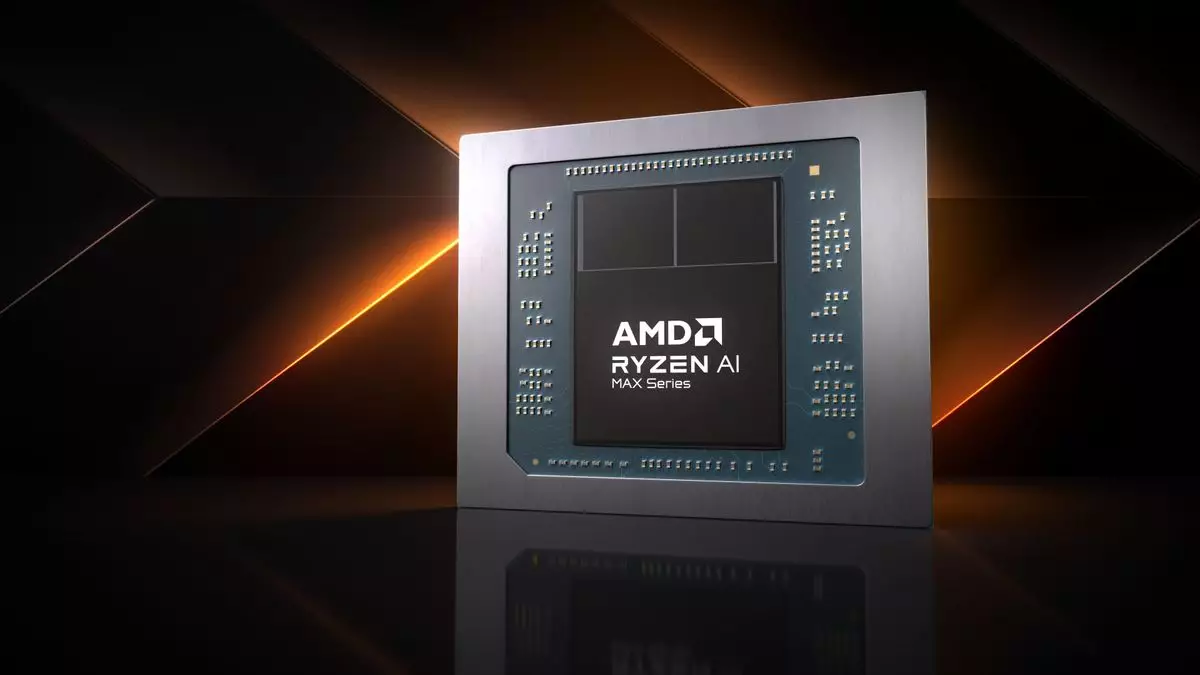AMD’s upcoming Strix Halo APU has generated considerable buzz in the tech community, particularly following its recent benchmark results in 3DMark Time Spy. As more details emerge, it’s becoming increasingly essential to dissect not only what these benchmarks indicate for this formidable component but also how they compare against AMD’s earlier claims and competitors in the market.
The early benchmarks for the Strix Halo APU indicate both promising and somewhat disappointing outcomes. Notably, the GPU scored 10,106 while the CPU managed 5,571 in 3DMark Time Spy. When placed alongside AMD’s previous performance metrics, like those seen during its Geekbench debut in December, we find a skewed expectation—one that may have been overly optimistic. The reported scores demonstrate that the APU is likely positioned around the laptop RTX 4050 category, marginally falling short of prior predictions that suggested it could approach the performance level of an RTX 4070 gaming laptop.
This discrepancy between anticipated and actual performance underscores an important aspect of hardware development: the challenge of translating theoretical capabilities into functional reality. Although 3DMark serves as a decent benchmark for gauging graphical prowess, it is not exhaustive. A broader range of gaming scenarios might yield a different perspective, offering insights into how well the Strix Halo can handle varied workloads and gaming environments.
One of the standout features of the Strix Halo APU is its lack of a dedicated GPU. This design choice impacts its classification in the market. By relying on integrated graphics, AMD aims to blur the distinction between traditional CPU functionality and the capabilities usually reserved for discrete graphics units. As a result, early indications suggest that the Strix Halo could deliver performance that rivals notebooks equipped with an RTX 4060—impressive, given it operates without a dedicated GPU.
However, potential buyers should remain cautious. While integrated graphics have come a long way, they are often not as powerful as discrete options. The performance spike over earlier iterations in AMD’s line might not be as significant as anticipated. With the Strix Halo positioned against formidable competitors like NVIDIA’s offerings, it raises questions regarding its market viability. The performance may meet expectations, but how it will stack up in practical gaming scenarios remains to be seen.
A critical component of the Strix Halo’s architecture is its use of customized Zen 5-based CPU cores. This bespoke design is reflective of AMD’s attempts to innovate within the APU space rather than simply replicating existing designs. Furthermore, the integration of a new interconnection methodology among CPU complexes promises enhanced power efficiency. While this may lead to improvements in battery life—a crucial factor for gaming laptops—the trade-off lies in the variability of performance due to configurable wattage, which can spike up to an impressive 120 W.
The engineering feats involved in developing the Strix Halo APU illustrate the complexities tied to creating high-performance computing devices that balance power consumption and thermal output. The multi-faceted approach towards efficiency may result in an APU that not only delivers competitive performance but also supports longer-lasting battery life—a significant advantage for users who prioritize portability.
The unveiling of the Strix Halo APU feels like an integral moment in AMD’s roadmap toward capturing a larger share of the gaming laptop market. While the early benchmarks paint a middle-ground picture, they also open the conversation on how AMD might further optimize and tweak performance ahead of the final release.
Given the competitive landscape characterized by rapid technological advancements, AMD will need to ensure that upcoming product iterations not only meet but exceed expectations to lure gamers and content creators alike. As the tech world remains ever-evolving, the true legacy of the Strix Halo APU will largely depend on real-world performance and user satisfaction upon launch.
While the initial benchmarks of the Strix Halo APU provide a foundation for understanding its capabilities, the gaming community is encouraged to reserve full judgment until extensive testing can be conducted with a diverse array of games. As these versatile chips find their way into laptops and other devices, their true potential will begin to unfold on the playing field of real-world performance.

